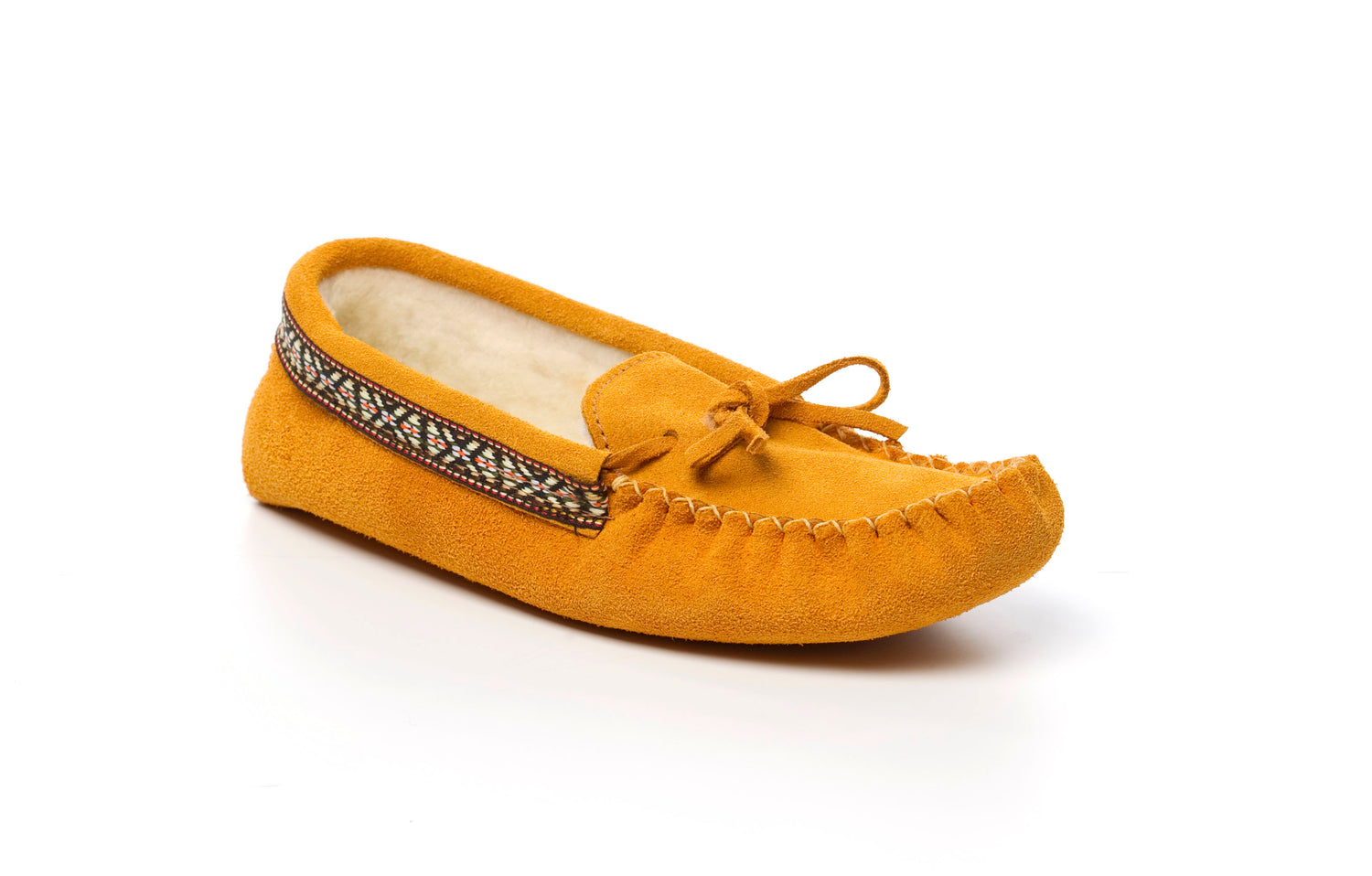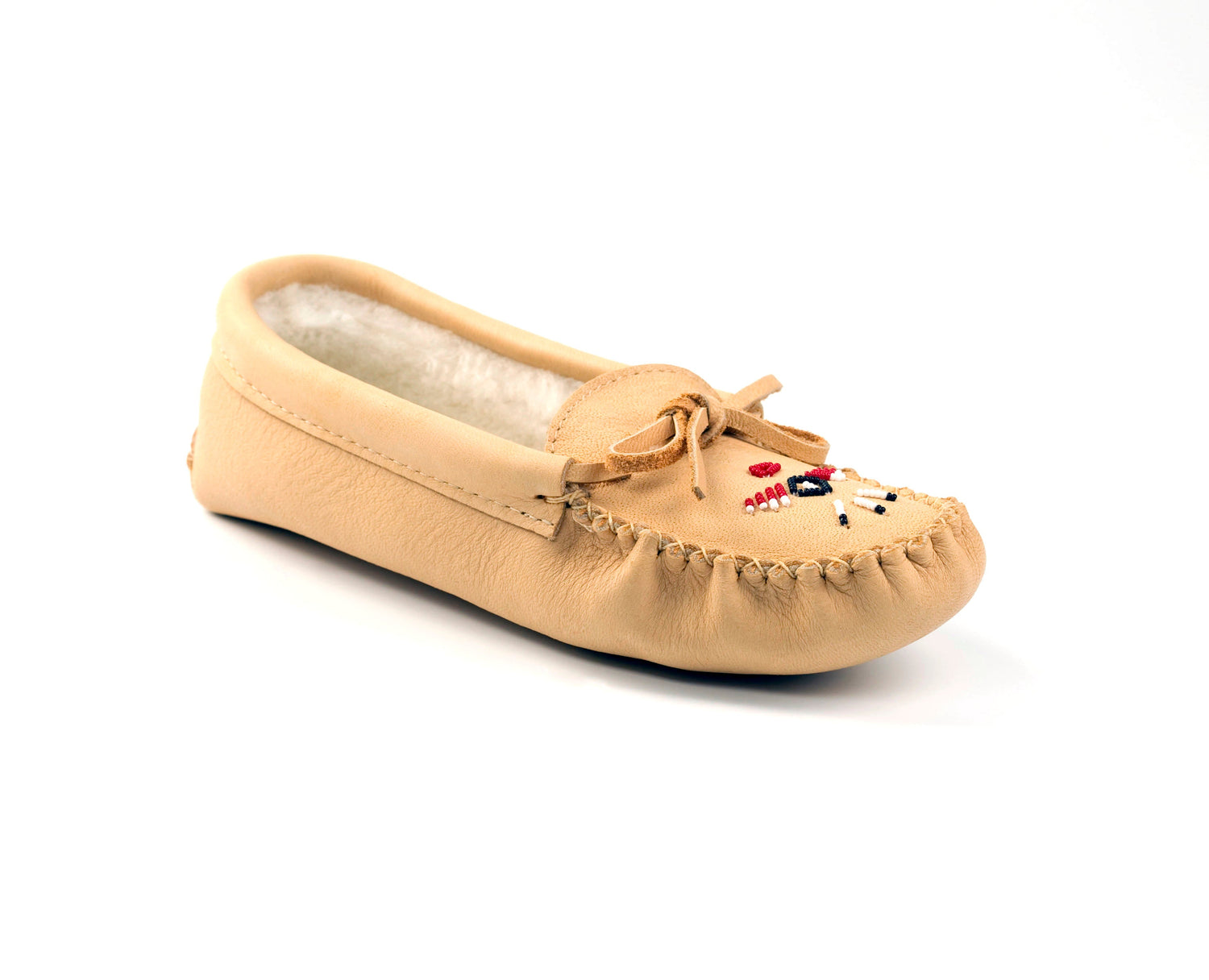
September: A Sacred Transition – Indigenous Harvesting and Preparation for Fall
Share
September: A Sacred Transition – Indigenous Harvesting and Preparation for Fall
September, often seen by many as simply the start of autumn, holds profound significance for Indigenous peoples across North America. Far from just a calendar month, it marks a crucial period of transition, intensive harvesting, and deep spiritual preparation for the colder months ahead. This time-honoured cycle is not just about survival; it's about respecting the land, giving thanks, and reaffirming cultural connections that have sustained communities for millennia. As the leaves begin to turn and the air grows crisp, the rhythms of life shift, and the importance of warm, durable footwear like moccasins and mukluks becomes paramount.
The Rhythm of Harvest – Sustenance and Gratitude
For Indigenous nations, September is a period of intense activity following the vibrant growth of summer. It is a time when many crucial food sources reach their peak, demanding coordinated effort from entire communities.
- Bountiful Harvests: Depending on the region, various foods are gathered.
-
Pacific Northwest (e.g., Coast Salish, Nuu-chah-nulth peoples near Nanaimo): Salmon runs are at their peak, demanding skilled fishing, cleaning, and preservation through smoking or drying. Berries like cranberries and salal berries are ripe for picking. Shellfish harvesting continues, and roots like camas are traditionally gathered.
-
Plains Tribes (e.g., Cree, Blackfoot): The buffalo hunt, a central activity for centuries, would historically conclude around this time, followed by processing the meat for pemmican, hides for clothing and shelter, and bones for tools. Wild rice (manoomin) is harvested in abundance in the Great Lakes region (e.g., Anishinaabe).
-
Eastern Woodlands (e.g., Haudenosaunee, Anishinaabe): Corn, beans, and squash (the "Three Sisters") are harvested, along with various nuts, roots, and medicinal plants.
-
Traditional Preservation: Harvesting is just the first step. Communities dedicate themselves to traditional preservation methods – smoking, drying, fermenting, and storing – to ensure sustenance through winter. This knowledge, passed down through generations, is vital for food security.
-
Ceremonies of Thanks: This period is often accompanied by ceremonies of gratitude and thanksgiving. These rituals acknowledge the generosity of the land and waters, reinforcing the deep spiritual connection Indigenous peoples have with their environment. These ceremonies are not just celebrations; they are acts of reciprocal respect, recognizing the gifts provided by the Creator and the natural world. They underscore the understanding that humans are part of nature, not separate from it.
Preparing for Winter – Shelters, Tools, and Spiritual Readiness
Beyond food, September is a time for comprehensive preparation that touches every aspect of community life, from physical infrastructure to spiritual well-being.
-
Shelter Maintenance and Enhancement: Homes, whether longhouses, tipis, pit houses, or wigwams, are inspected and reinforced to withstand winter's harsh elements. This might involve adding extra layers of hides or bark, repairing structural elements, or gathering firewood. The goal is to create warm, secure environments for families to thrive during the colder months.
-
Tool and Equipment Readiness: Hunting, fishing, and gathering tools are meticulously repaired, sharpened, or crafted anew. This includes ensuring snowshoes, traps, and sleds are in prime condition. The foresight and craftsmanship involved in preparing these tools are critical for winter survival.
-
Gathering Medicinal Plants: Knowledgeable elders and healers gather late-season medicinal plants, drying and storing them for winter ailments. This traditional medicine cabinet is an integral part of community health.
-
Storytelling and Knowledge Transfer: As the days shorten and outdoor work becomes less feasible, communities transition indoors. This is a crucial time for storytelling, oral histories, and the transfer of traditional knowledge from elders to younger generations. Lessons about survival, cultural values, and spiritual teachings are shared, strengthening communal bonds and cultural continuity. This period of indoor gathering is essential for reinforcing identity and history.
-
Spiritual and Mental Preparation: The changing season also calls for internal readiness. Reflection, prayer, and communal gatherings help prepare individuals and the community spiritually for the challenges and introspective nature of winter. It's a time for quiet contemplation and strengthening inner resilience.
The Role of Footwear – Moccasins and Mukluks Step Forward
As the ground cools and the first frosts arrive, the importance of appropriate footwear cannot be overstated. Moccasins and mukluks, far from being mere accessories, become vital tools for survival, comfort, and cultural expression.
- Moccasins: Everyday Comfort and Connection:
-
Adaptability: Moccasins, traditionally made from deer, elk, or moose hide, offer excellent flexibility and sensitivity to the ground, which is crucial for hunting, tracking, and moving quietly through diverse terrains.
-
Material Properties: The natural properties of leather provide breathability and insulation, adapting to the wearer's foot and offering comfort during long days of gathering or indoor activities.
-
Cultural Significance: Moccasins are often adorned with intricate beadwork, quillwork, or embroidery, reflecting tribal identity, personal stories, and spiritual beliefs. Wearing them is a daily connection to heritage and artistry. As winter approaches, thicker, fleece-lined moccasins become favored for indoor wear, providing warmth and comfort inside homes and gathering places.
- Mukluks: Essential for Deep Winter:
-
Designed for Cold: Mukluks (from the Yupik word "maklak" meaning "bearded seal," whose skin is often used), are tall, soft boots specifically designed for deep snow and extreme cold. They are primarily associated with Arctic and Subarctic Indigenous peoples like the Inuit, Dene, and Cree.
-
Superior Warmth: Made from various animal hides (seal, caribou, moose) and often lined with fur (rabbit, beaver), mukluks provide unparalleled insulation. Their design prevents snow from entering and allows for good circulation, preventing frostbite.
-
Snowshoe Compatibility: Their soft, flexible construction makes them ideal for use with snowshoes, crucial for winter travel and hunting across vast, snow-covered landscapes.
-
Durability and Craftsmanship: Crafting mukluks is a highly skilled art, requiring knowledge of hide preparation, cutting, and stitching that ensures waterproofing and extreme durability against harsh conditions.
As September progresses and temperatures drop, the transition from lighter summer footwear to the more robust and insulating moccasins and mukluks signifies a deeper engagement with the changing season and the preparations for winter's embrace.
Moccasins and Mukluks Today – Heritage and Modernity
In contemporary Indigenous communities, and for many non-Indigenous people who appreciate their quality, moccasins and mukluks continue to play a significant role, bridging ancient traditions with modern life.
-
Cultural Revitalization: The creation of moccasins and mukluks remains a vibrant part of cultural revitalization efforts. Artisans meticulously craft these items, often passing down skills through generations, ensuring the continuity of traditional designs and techniques. Wearing or gifting these pieces is an affirmation of Indigenous identity and pride.
-
Economic Empowerment: For many Indigenous artists, crafting moccasins and mukluks provides a vital source of income, supporting their families and communities. Purchasing authentic, Indigenous-made footwear directly supports these artisans and helps preserve valuable cultural practices.
-
Modern Adaptations: While traditional methods are cherished, contemporary moccasins and mukluks often incorporate modern elements for enhanced comfort and durability, such as rubber soles for grip, advanced insulation materials, and varied decorative styles. This evolution allows them to remain practical for everyday wear in various environments while maintaining their authentic spirit. For example, here in Nanaimo, you might find moccasins with durable outdoor soles perfect for a stroll, or luxurious fleece-lined ones ideal for cozying up at home.
- Symbol of Connection: Beyond their practical utility, moccasins and mukluks remain powerful symbols of connection to the land, to ancestry, and to the enduring spirit of Indigenous cultures. As September ushers in the colder months, these items remind us of the wisdom embedded in preparing for the seasons, respecting natural cycles, and finding comfort and strength in tradition. They are a testament to resilience, artistry, and the profound relationship between people and their environment.



